White Cube New York’s Inaugural Show Alludes to 90s Hip-Hop
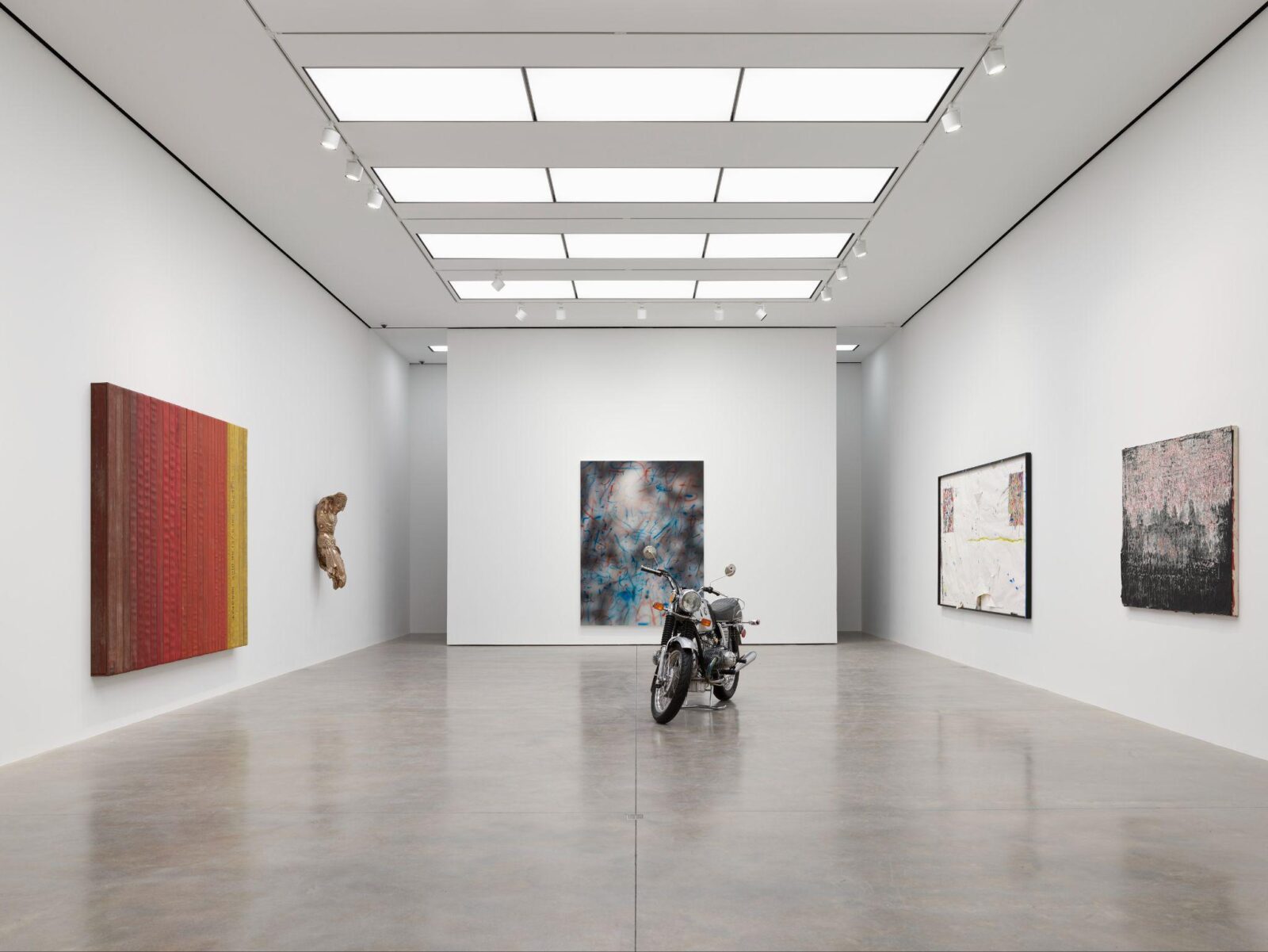
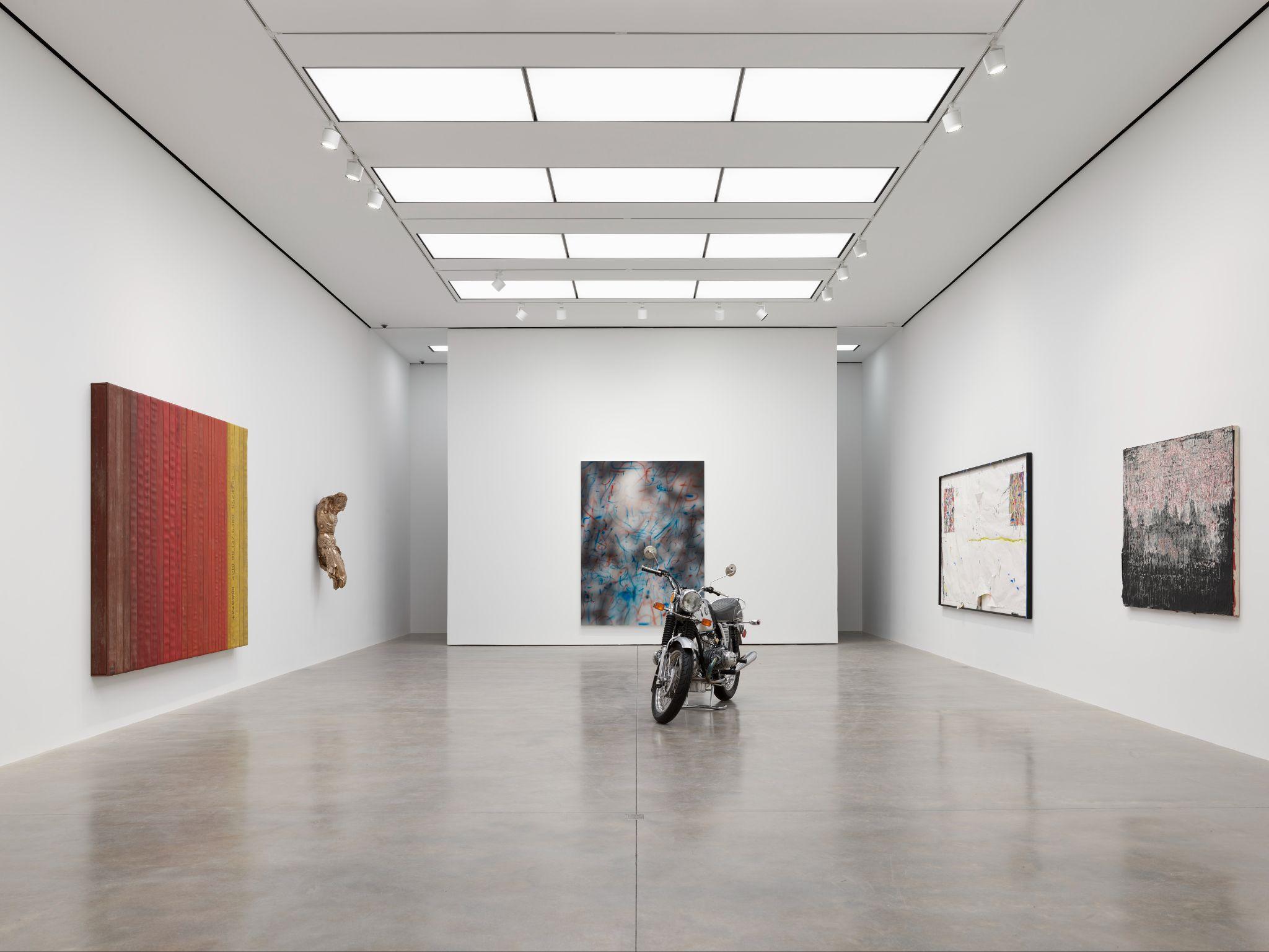
“A chopped and screwed mixtape,” writes critic Sasha Bonét, “is a slicing and a stirring. Creeping through a melody so that the listener can linger a bit on the edges of the implicit. Innuendos made visible that may otherwise be missed if you’re speeding by.” These words appear in an essay accompanying “Chopped & Screwed,” the inaugural exhibition at White Cube’s new gallery space on the Upper East Side, nestled in a 1930s bank building with a neo-Georgian facade and stolid red brick walls.
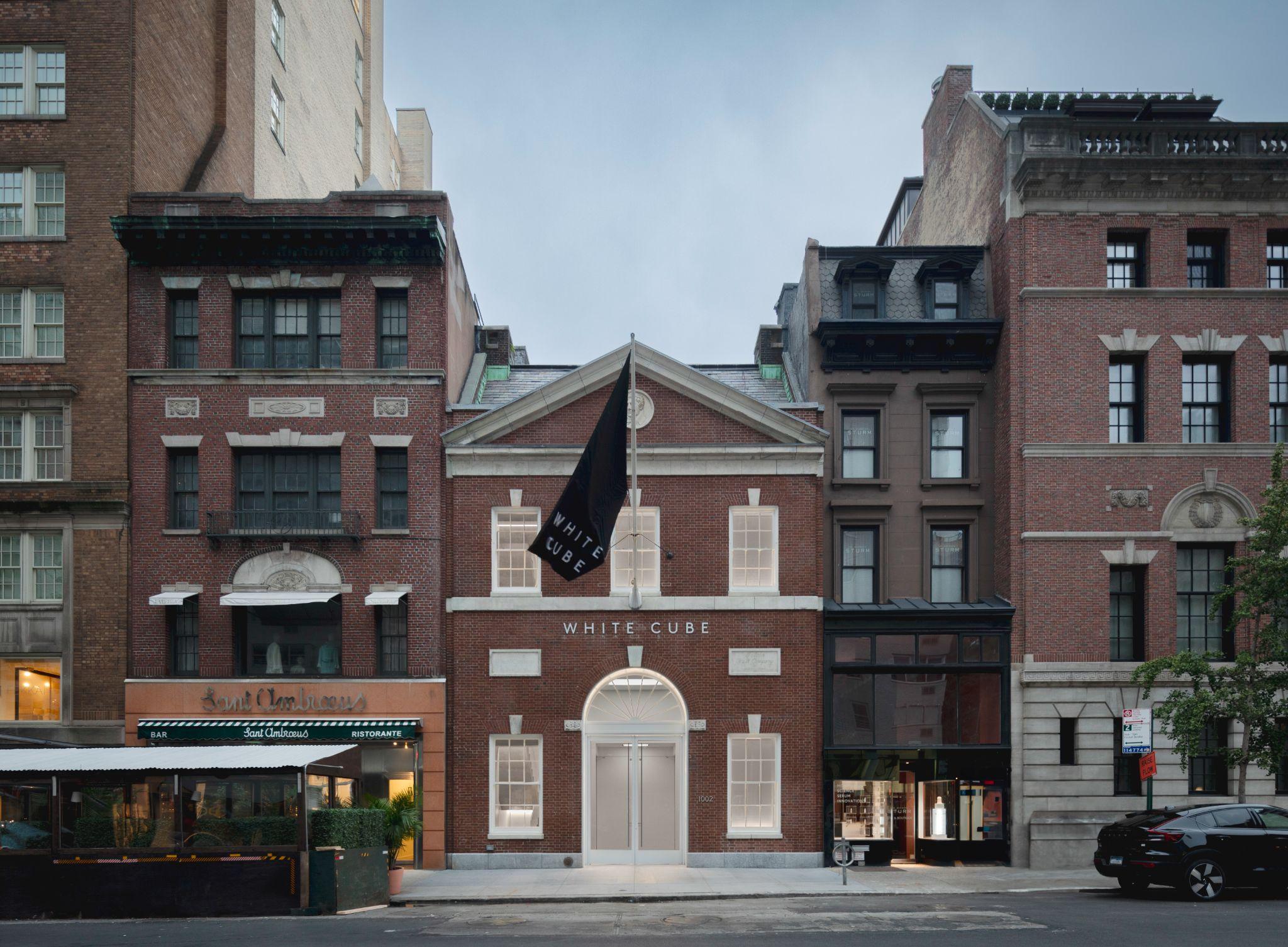
Curated by Courtney Willis Blair, the London-based gallery’s US senior director, and on view through the month of October, “Chopped & Screwed” includes the work of nineteen well-known artists—David Altmejd, Michael Armitage, Georg Baselitz, Mark Bradford, Theaster Gates, General Idea, Robert Gober, Philip Guston, David Hammons, Mona Hatoum, Christian Marclay, Tiona Nekkia McClodden, Julie Mehretu, Adrian Piper, Pope.L, Nathaniel Mary Quinn, Carol Rama, Ilana Savdie, and Danh Vo.
The show’s title references hip hop’s eponymous “chopped and screwed” subgenre. Screw music, developed in the 1990s by the late DJ Screw in south Houston, features slowed tempos, reduced pitches, record scratching, and extensive sampling, which together form a sound that is at once mellow and disorienting. The exhibition—an eclectic constellation of visual ambiguities and internal friction—emphasizes the notion of sampling, a technique used by musical artists to loop and layer portions of existing tracks in a new recording. Willis Blair argues that sampling is also a tactic of resistance against “existing hegemonic conditions and prevailing narratives.”
In the gallery, I was drawn first to Tiona Nekkia McClodden’s “The Lover, off the road (After Barbara)” (1972–2021), a fifth-generation BMW R75 motorcycle McClodden restored as an homage to the lesbian experimental filmmaker Barbara Hammer, having been inspired by a photo of Hammer riding one in California in the 1970s.
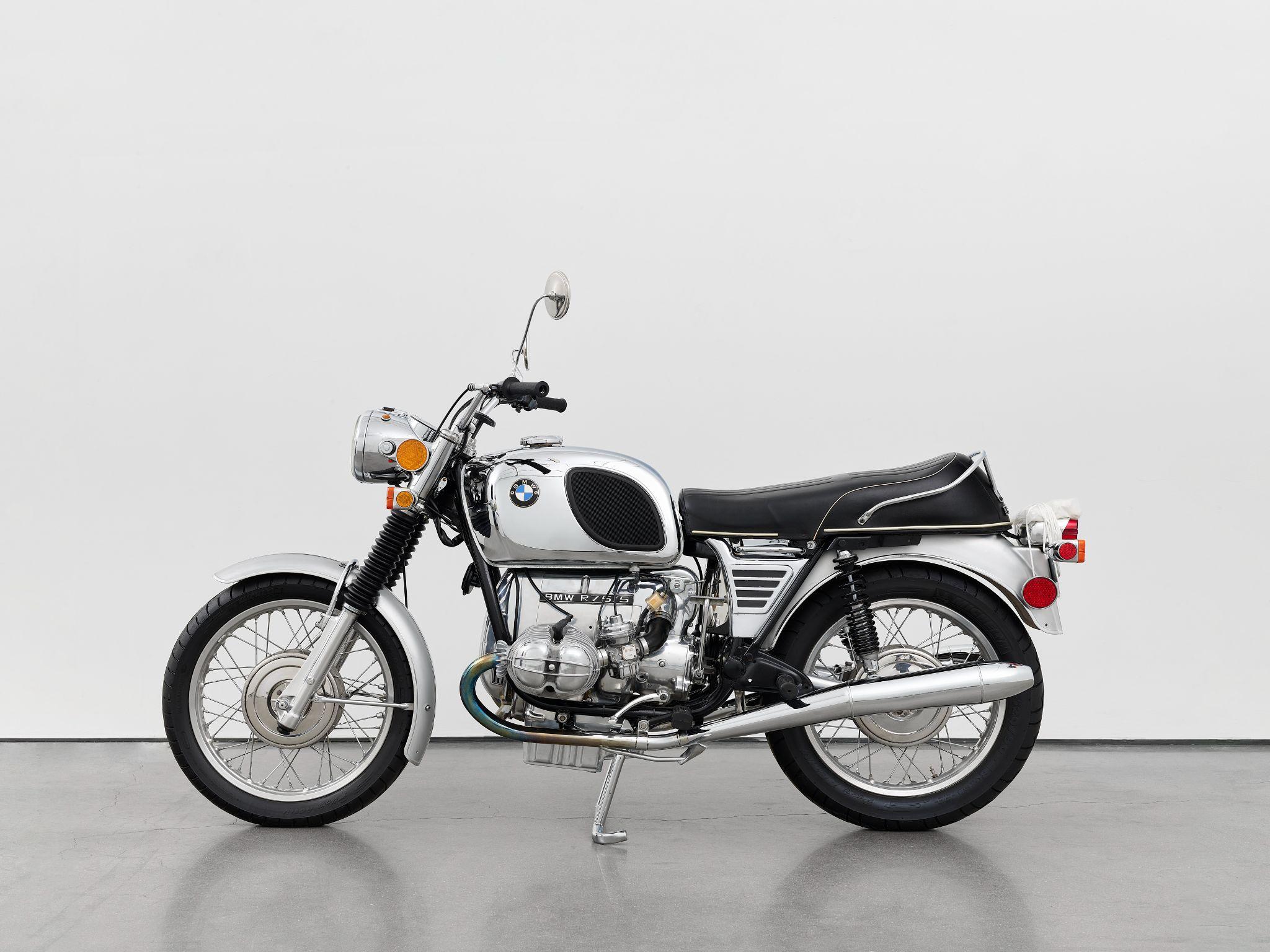
The motorcycle’s glossy chrome exterior evokes sensations of wind, speed, open highways, and danger. Meanwhile, sitting quietly in the exhibition space, having entered its second life as an art object, “The Lover” possesses another kind of power, that of restfulness and self-assurance. The bike’s restored surface reflects the goings-on in the room around it, calling out the innuendos—to borrow Bonét’s word—that emerge in a state of heightened attention. Having inherited or, rather, worked herself into Hammer’s narrative through this labor of love, McClodden has in effect sampled part of the feminist filmmaker’s legacy and made it her own.
If sampling is a tactic of resistance then the works in “Chopped & Screwed” also endeavor to peer inside calcified, co-opted histories and contend with the nuances within them. Nathaniel Mary Quinn’s “Fighting Kings” (2023) does just that. The charcoal, gouache, and soft pastel work on paper features the faces of Martin Luther King Jr. and his wife Coretta Scott King rendered in a collagist’s hand. The work’s title refers to the purported marital troubles between the two civil rights leaders: in 2006, a week after Coretta died, the LA Times reported on the infidelities and financial conflicts that strained the couple’s relationship. Just as a track can be assembled from disparate samples, Quinn constructs the two figures from disjointed limbs and facial features. Read against the Kings’ biographies, “Fighting Kings” alludes to the way some legacies fracture under scrutiny. The work reminds us that a painstaking excavation of facts and memories is a love letter in its own right. Critique is, after all, a form of care.
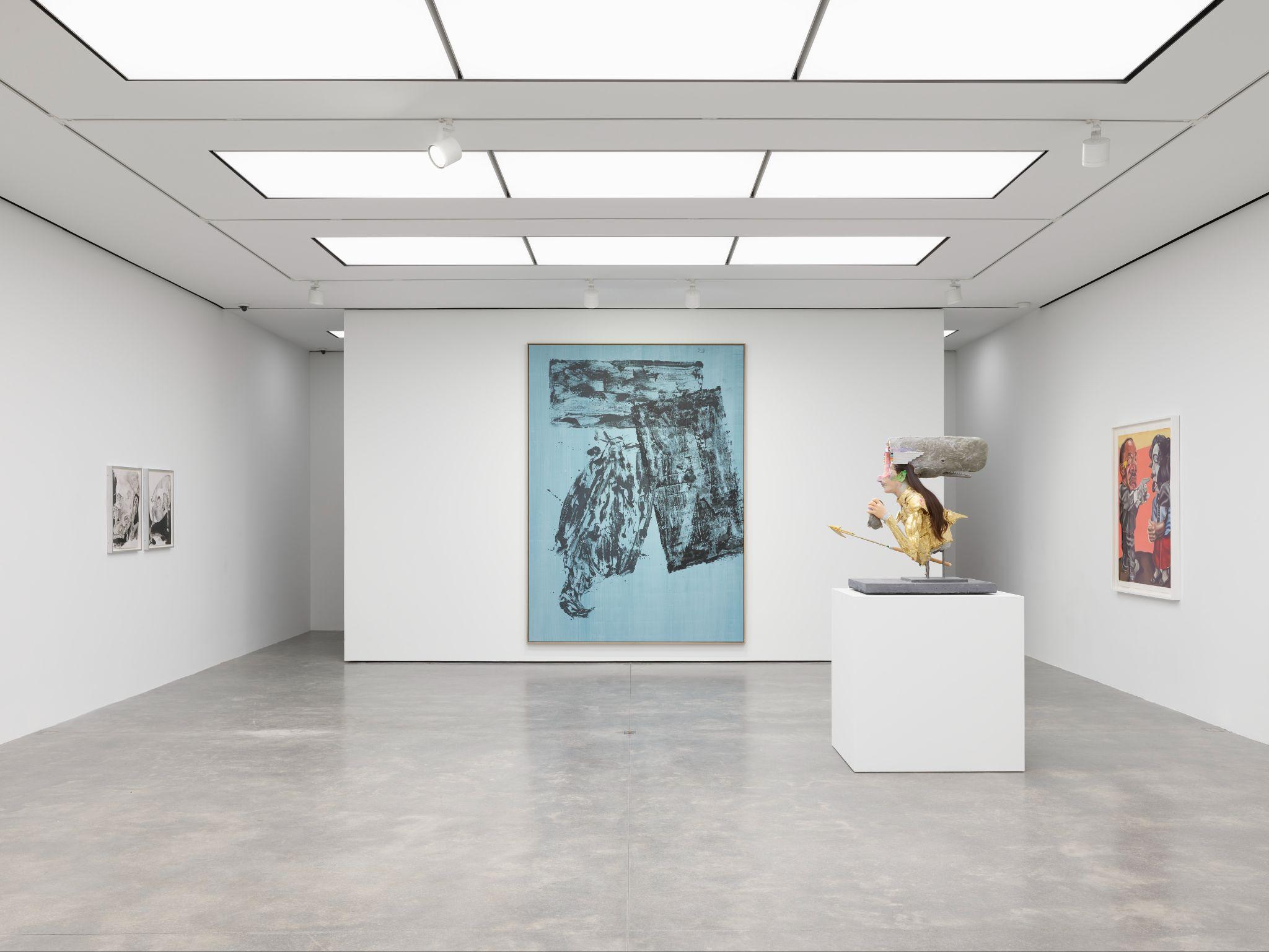
Another chimerical figure, David Altmejd’s Janus-faced epoxy sculpture “The Whaler” (2023), has undergone a “slicing and stirring” across species. A human whose occupation is to hunt and process whales’ bodies as commodities holds a piece of fatty white flesh in their hand. On the back of their head is the gray head of a whale. From behind, the human appears to be wearing the whale’s head. Seen from the front, however, it becomes clear that the human and whale are two halves of a hybrid whole, whose “face” is a gaping, expressionless abdominal cavity.
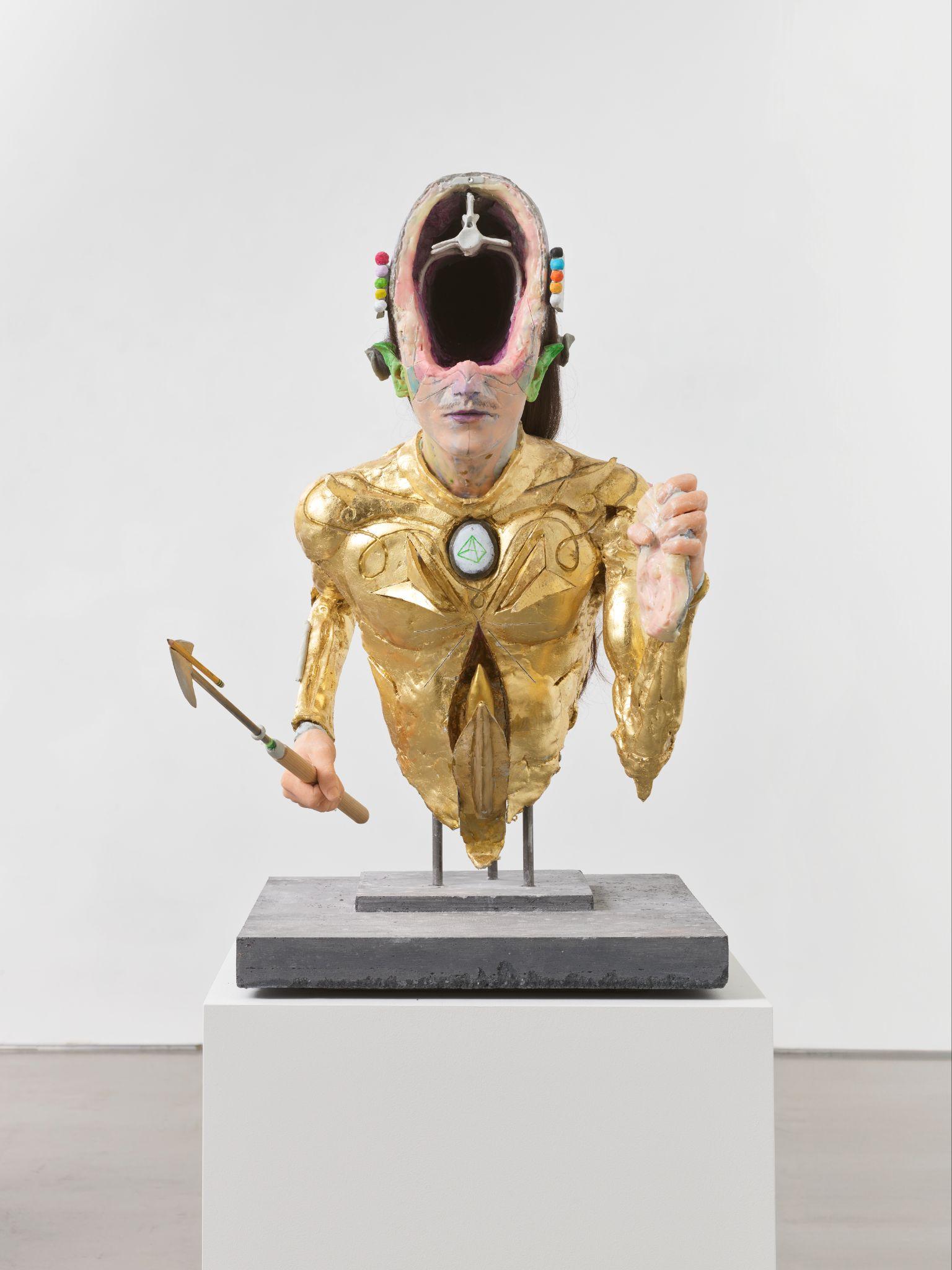
By defacing the whaler, Altmejd produces an irreverent grotesque. Nevertheless, an elegance remains in the figure’s torso, suspended mid-lunge in a pivotal moment preceding action. In the stillness, one wonders, What will the whaler do with the piece of extracted flesh? One way to read the sculpture and its gradually unfolding innuendos is to approach it as a work of ecocriticism, a comment on the entangled relationship between humans and nonhumans and the strain caused by our greed for commodifiable resources. The spacious gallery gives viewers room to circumambulate the sculpture, interpret, and reinterpret the depicted scenario.
Similarly, a work like Pope L.’s oil and acrylic diptych “Occluded Middle” (2011/2022) requires close consideration before its gratifying details—the asymmetries, the push pins, the correction fluid—reveal themselves. In the case of Robert Gober’s “Untitled (Drain)” (1993), an intervention in one of the second-floor walls, sustained time in the gallery is required to even notice the subtle chrome cross buttressing an uncanny circular incision. Like a mixtape, “Chopped & Screwed” deftly configures its cast of artists into a series of yet-explored encounters. The collaged world of the exhibition rewards close looking and slow thinking—thinking that, in other words, jettisons expediency and easy answers in favor of feeling one’s way through a once-familiar tune and embracing newfound disorientation.
“Chopped & Screwed” is on view at White Cube New York October 3–28, 2023.
You Might Also Like
An Overview of Virgil Abloh’s Work That Extends Far Beyond Fashion
Amadour’s Newest EP “Western Movie Dream” Can Be Your Fantasy, Too
What's Your Reaction?
Jenny Wu is a writer and independent curator. Her work has appeared in Art in America, BOMB, The New York Times Magazine, and elsewhere.

